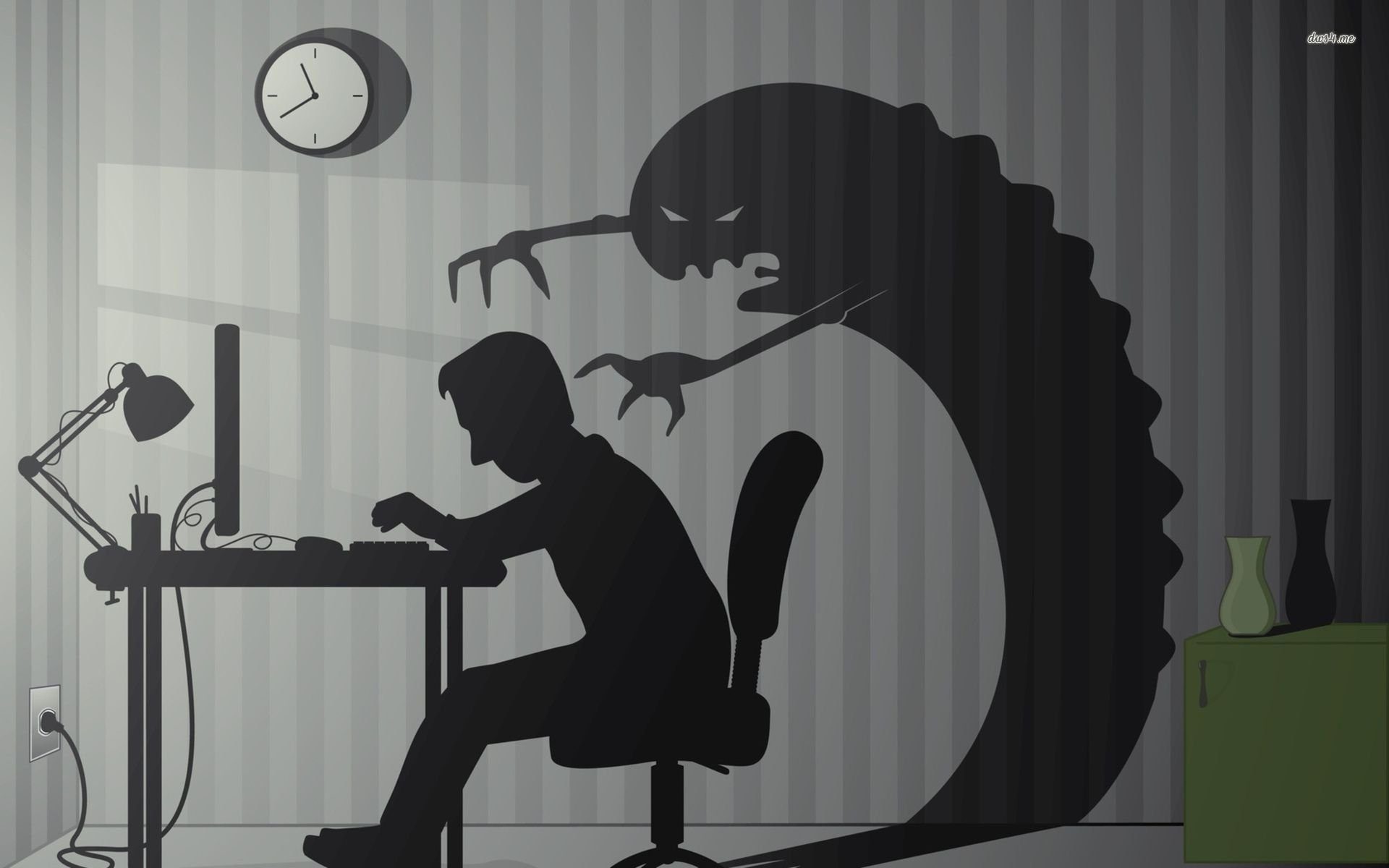
Marjorie warns Merry throughout the book that the person who is actually possessed is their father, John. In Marjorie’s “growing-things” story, John slowly poisoned their mother to death and was in the process of killing Marjorie. His last victim would be the young, innocent Merry. Marjorie insisted that the “growing-things” story was true stating, “That one’s mine. That one is – real. You still can’t ever forget that story, little Merry,” (Tremblay 125).
When the new night routine is set up, Marjorie spends the entire night watching John through the open door. Marjorie reveals, “I think he might be the one who’s possessed… Hasn’t he been acting so strange? So over-the-top religious now, and always so angry? I’m scared. I think he thinks about doing bad things, really bad things, like in the growing-things story I told you,” (184).
Like the creeping vines in Marjorie’s “growing things” story, John chokes the life out of every person in the house. He becomes possessed with such religious fervour, that he exploits his daughter’s illness and tears the family apart.

John is depicted as irrational, violent, and on the verge of mental collapse. “He grew scarier by the day,” Merry recollected, as John turned to religious zeal to deal with his oldest daughter’s illness (192). Was he exploiting Marjorie to make money to support his family? Did he truly believe that his daughter was possessed by a demon?
When the family members were offered the chance to give individual commentary on camera, John “didn’t talk to the camera. He orated. He gave pep talks about how our family would overcome. He proselytised, working in Bible references,” whenever he could (188). John became deranged and was living somewhere between fiction and reality. He had no control over what was happening to his daughter, yet he tried everything he could to control it. There is no real explanation for Marjorie’s illness, but John is convinced that he can save her. His zeal fills him with energy and power, often erupting into violent outbursts and even resulting in an untimely arrest.
On the other hand, the mother, Sarah, slowly deteriorates. “She looked older with her puffy, bloodshot eyes. She gave me an unsure, sad smile. I thought about telling her that her teeth looked really yellow, that she was smoking way too much,” (140). Sarah collapses into a heap of guilt and becomes less emotionally stable, because she didn’t stand her ground against her husband’s wish of performing an exorcism and broadcasting it. As a result, she is alienated from her husband, Merry is bullied at school, protestors are lining the sidewalk, and Marjorie is disappearing altogether. The once put-together and sane mother continues to break down with each passing page, as if she were being slowly poisoned to death and buried alive beneath the weight of it all.
The cameras broadcasting Marjorie’s illness act as a public execution. Marjorie’s social life is completely dead and she is cut off from the outside world. Girls from her school start up an Instagram page and post images of Marjorie with disgustingly sexual captions and screenshots. Marjorie is unable to function even remotely as a normal teenager, and she is held prisoner in the hospital wards and church sermons. I have not finished the book, but I predict that the worse is yet to come.
Marjorie never asked for any of this. John is the one who offered up possession and exorcism as feasible diagnosis and treatment. John is the force behind it all, the one who pushes the family to the edge of destruction.
Marjorie as the Monstrous-Feminine
In addition to understanding the vines, this post intends to explore the relationship between Marjorie and Regan from The Exorcist. There are a number of notable similarities between the two characters. A few tie back to Barbara Creed’s “The Monstrous-Feminine.”
- “While the theme of spiritual decline is central to The Exorcist, it is secondary to the film’s exploration of female monstrousness and the inability of the male order to control the woman whose perversity is expressed through her rebellious body,” (Creed 34). Throughout the novel, John unsuccessfully attempts to control Marjorie’s illness. Unfortunately, he has zero control over her illness and even less control over her body as a whole. For example, when the family and crew bring Merry upstairs to confront her sister for the first time, Marjorie is topless. John wants Marjorie to cover up in front of the cameras, but he is unable to do so without the risk of interfering with Father Wanderly’s work. An almost incestual act has been involuntarily committed by John. The idea of control is central to Tremblay’s work, because there is a total lack of control. The father, the male figure, is trying to control the daughter’s body to no avail. John is unable to come to terms with this fact, and destroys his family in the process.
- There is a graphic association of the monstrous with the feminine body (37). Marjorie’s body transformation mimics that of Regan. This includes the red marks on her stomach, the green vomit, the dingy hair and deranged eyes, and the multiple voices that are somehow still her own. She possesses a “body in revolt” (40). The source of this revolt, however, is unclear.
- While Marjorie represents Regan, Merry represents Regan’s mother. Merry is the only one who could pacify Marjorie as well as bring out her demons. Merry is the closest person to Marjorie, and Marjorie often confides her deepest secrets to her.
“DON’T PROFIT OFF THE DEVIL’S WORK”
www.blumhouse.com/2015/12/02/is-the-exorcist-movie-cursed/
Works Cited
Creed, Barbara. The Monstrous-Feminine : Film, Feminism, Psychoanalysis.London: Routledge, 1993. Print.
Tremblay, Paul. A Head Full of Ghosts: A Novel. New York, NY: William Morrow, an Imprint of HarperCollinsPublishers, 2015. Print.

